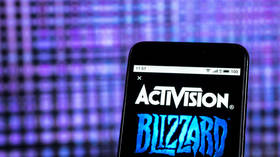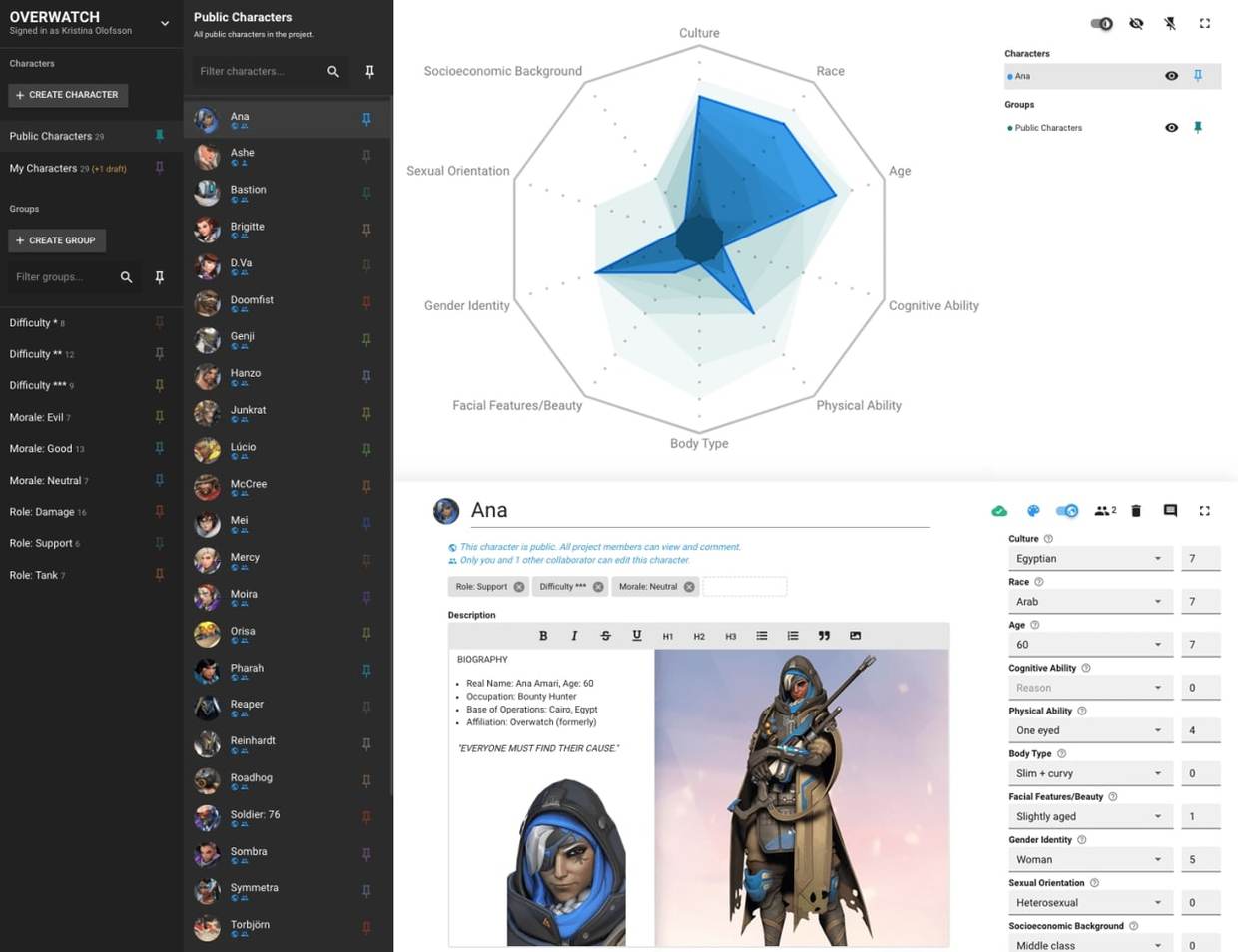Activision Blizzard hits new woke tokenism low with ‘diversity’ tool for game characters


If you ever made the joke that the most oppressed person in the world is a black trans-identifying lesbian with physical disabilities, then you were ahead of the curve. Activision-Blizzard, the makers of Call of Duty and Overwatch, have – very inexplicably, but not unsurprisingly – created a tool to objectively rate a character’s “diversity.”
The game developers, who are currently embroiled in various labor lawsuits with the state of California and workers unions over fostering a toxic work environment for its female employees, up to and including sexual harassment, have decided to ramp up their woke efforts with the development of a character diversity metric.
The system, which isn’t unlike what you might find on a role-playing game character sheet, assigns a score to various attributes, including race, gender, sexual orientation, culture, disability, and so forth.
Activision-Blizzard understands that it needs to make fundamental changes to how it is perceived by the public – especially in the wake of Microsoft’s move to take it over – but making, and even publicizing a tool that distills “diversity, equity, and inclusion” into pre-defined metrics is not the best way to go about it. If anything, it tokenizes certain attributes – that’s both racist and sexist.
According to a blog post Activision-Blizzard published on its website, the thrust is that employees at one of its subsidiaries, King, developed a tool in their off-hours to break down character attributes to rate how “diverse” they are. The post, which calls it the “Diversity Space Tool,” was made based on a collective desire to make their characters more diverse and less straight, white, and male.

In 2016, King started working on a method for what they call “guarding against unconscious bias and exclusion,” which is just a clever way of saying that the developers – who are predominantly white and male – wanted to make characters who don’t reflect their personal biases.
King, with the help of the Massachusetts Institute of Technology’s MIT Game Lab, turned their mission statement into a piece of tangible software to “create and monitor guidelines for character conception and creation,” and identified various elements that make up a character, including gender, body type, roles as either heroes or villains, and even went into more granular detail to incorporate their pose, attitude, and so forth. A confident character with a strong gait might rank as “less diverse” than an anxious, skittish character who hunches over.
According to Activision-Blizzard, the idea of a “tool” to make characters more diverse and inclusive came about at a time when nearly 80% of the highest-selling games featured white, male protagonists – according to a study cited by the company. They wanted to see less of that and offer more so-called “representation.”
As detailed in the blog post, the metrics listed are culture, race, age, cognitive ability, physical ability, body type, facial features and beauty, gender identity, sexual orientation, and socioeconomic background.
The blog post uses the Overwatch character Ana as an example, providing her with points in culture, race, age, physical ability, and gender identity. Ana, who is an Egyptian older woman of Arabic descent with only one eye, scores highly on all traits but scores lowly on sexual orientation and body type because she is heterosexual and has a “slim and curvy” body type.
It proudly mentions that the tool has been used to general enthusiasm from the teams of Overwatch and Call of Duty: Vanguard, two games that have, perhaps, the most diverse roster of playable characters in any modern game. According to one of its developers at Sledgehammer, Alayna Cole, the team is “going to use that data going forward into the next games that we’re working on.”
Don’t be too shocked if the next Call of Duty warfighter protagonist is conceived as an obese pink-haired character who rides around on the battlefield in a mechanized wheelchair – or something akin to that. A character that ticks all the boxes, no matter how unrelatable to the average gamer, would have maximum diversity.
As the logic goes, the more diverse the character, the more they’ll be able to cater to the lowest common denominator – but reality doesn’t quite work that way. The audience looks to characters as aspirational figures and heroes. There’s a reason the main character in Uncharted isn’t one of the extras Nathan Drake kills along the way – who’d want to play that?
It instantly raises a lot of questions by having the typical white heterosexual male protagonist at its zero point. “Male” and “heterosexual” appear to score zero on the tool’s gender identity and sexual orientation scales, and Ana’s “Arab” race scores seven on its respective scale. Does that mean someone at King decided that “black” ranks higher than “Arab,” which ranks higher than “Asian,” or created some other gradation? Did they use a color chart to measure the darkness of characters’ skin tones? How do non-human characters like robots and animals measure on the scale – is it by accent or personality? Can one robotic character be more ‘white’ than another?
The diversity tool has been widely criticized online, with many pointing out that if Activision-Blizzard wanted more diversity, the company should’ve diversified its workforce instead of going as far as developing a tool to create the appearance of diversity.
An update, published on May 13, aimed to address some of the criticism with the claim that the Diversity Space Tool was designed as an optional supplement for game developers. The update also removed the images showcasing the tool and wiped all mentions of Call of Duty: Vanguard and Overwatch.
Some Overwatch developers didn’t opt to remain silent about the company’s blog post, either – responding to it with criticism. Dylan Snyder, a senior game designer for Overwatch 2, explained on Twitter that his team was not using the tool and that he personally didn’t know it existed until it was announced.
Another developer, Overwatch artist Melissa Kelly, tweeted that her company “tries so hard to slaughter any good will the actual devs who make the game have built.” She called the chart “dystopian” and insisted that artists, developers, and writers have eyes and don’t need to draw upon an app to inform them of their decisions.
What ever happened to Martin Luther King’s dream of not judging others by the color of their skin and other immutable attributes? His dream, it seems, has become a nightmare in which such attributes are “gamified” and turned into a set of points on a sheet to determine how “diverse” a person or fictional character might be. It is the logical outcome of treating people not as individuals, but as templates.
The statements, views and opinions expressed in this column are solely those of the author and do not necessarily represent those of RT.